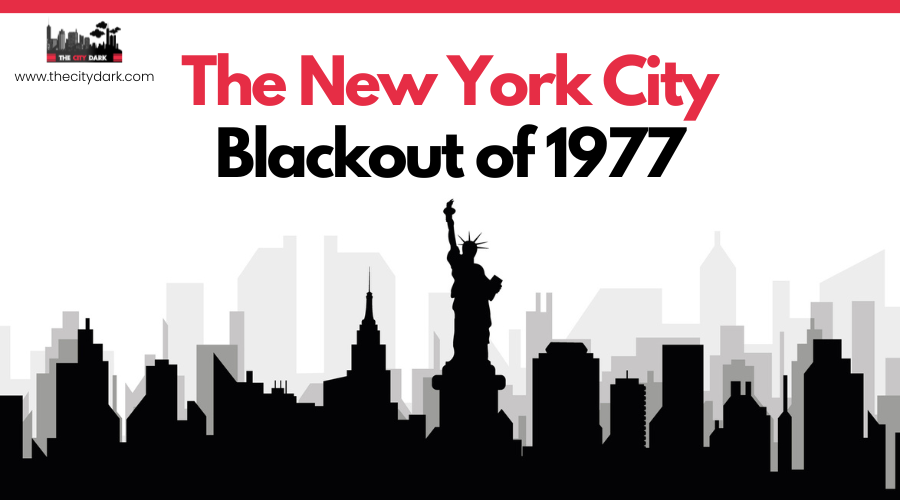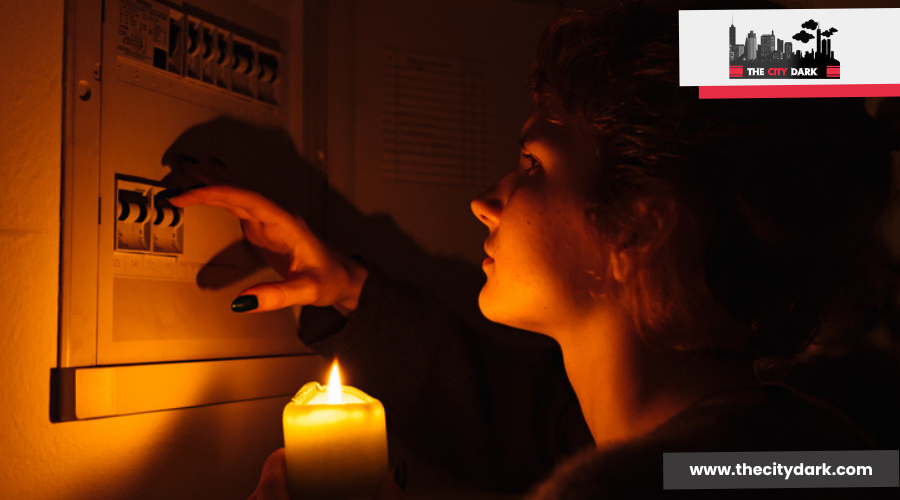The Great Northeast Blackout of 1965
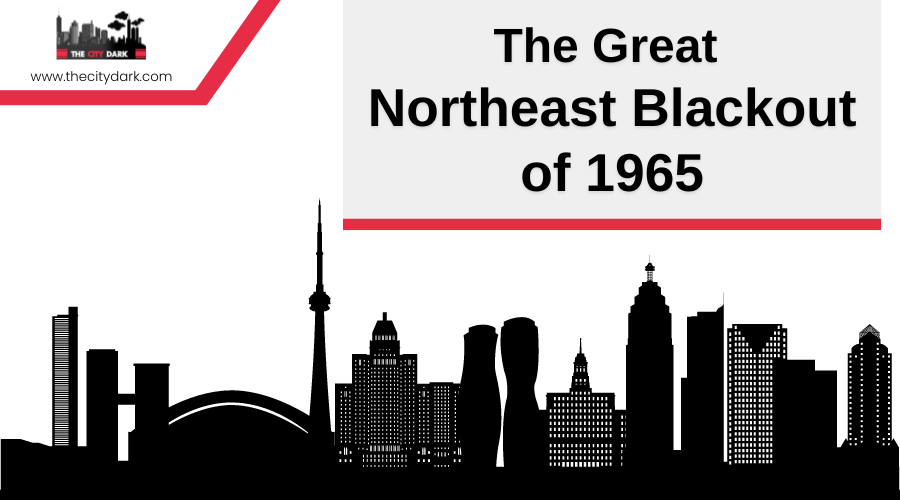
Imagine you're going about your usual evening when suddenly, the lights go out—not just in your home, but across several states and parts of Canada. It's November 9, 1965, and the Great Northeast Blackout has just plunged 30 million people into darkness. As you navigate the eerie, unlit streets and witness the chaos of stalled subways and failed traffic lights, you can't help but wonder how a single faulty relay in Ontario could trigger such widespread disruption. What unfolds next reveals both the vulnerabilities of modern infrastructure and the remarkable resilience of communities in crisis.
Overview of the 1965 Blackout
The Great Northeast Blackout occurred on November 9, 1965, at 5:26 p.m., affecting approximately 30 million people across the northeastern United States and parts of Canada. Major cities impacted included New York City, Buffalo, Rochester, and Syracuse. The blackout lasted up to 14 hours in some areas, revealing significant vulnerabilities in the electric power grid.
In New York City, the sudden power loss caused widespread disruption. Nearly 800,000 people were trapped in subways, and traffic came to a standstill as traffic lights went out, resulting in extensive gridlock. The blackout was triggered by a faulty relay at the Sir Adam Beck Hydroelectric Power Station in Ontario, which caused a cascading failure of transmission lines. This event highlighted the interconnected nature of the power grid and its susceptibility to single points of failure.
The blackout underscored the need for improved communication and coordination among utilities, leading to the establishment of regulatory bodies aimed at enhancing grid reliability. The Great Northeast Blackout was more than just a power failure; it was a critical wake-up call that reshaped the future of electric power infrastructure.
Causes of the Blackout
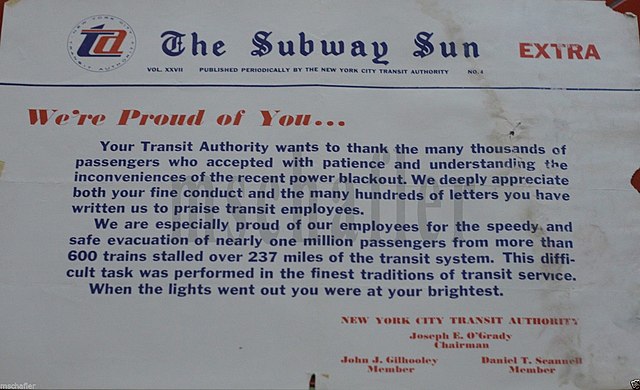
The Great Northeast Blackout of 1965 was primarily caused by a misconfigured protective relay at the Sir Adam Beck Hydroelectric Power Station in Ontario, Canada. This relay tripped at 5:16 p.m. due to power fluctuations, initiating a chain reaction that culminated in a widespread power outage.
Several key factors contributed to the blackout:
- High Power Demands: Cold weather significantly increased electricity consumption, straining the electrical grid.
- Overloaded Transmission Lines: Transmission lines in western New York became overloaded and failed, triggering further line failures.
- Power Supply Isolation: The cascading failures isolated the Niagara region's power supply, crucial for grid stability.
- Communication Failures: Ineffective communication among power companies hindered coordinated response efforts.
These factors combined to create a perfect storm, leading to one of the most significant blackouts in North American history. The interconnected nature of the electrical grid meant that the failure of one part had widespread repercussions, affecting millions across multiple states and parts of Canada. This incident highlighted the need for improved infrastructure and communication protocols to prevent future blackouts.
Affected Areas and Population
The Great Northeast Blackout of 1965 affected a vast region spanning eight U.S. states and parts of Canada, plunging around 30 million people into darkness. From New York to New Jersey, Connecticut, Massachusetts, Pennsylvania, and parts of Ontario, Canada, the blackout's reach was immense. Major cities like New York City, Buffalo, and Rochester abruptly lost power at 5:26 p.m., with the outage lasting up to 13 hours in some locations.
In New York City alone, 800,000 individuals were trapped in subway systems, highlighting the severe disruption to daily life. The interconnectedness of the electrical grid in the Northeast meant that the blackout's impact spread over a vast area, affecting both urban centers and rural regions. Each affected area faced unique challenges, but the shared experience underscored the region's vulnerability to massive power failures.
The blackout didn't just dim the lights; it significantly disrupted an extensive population, reminding everyone of the critical role electricity plays in modern life. The incident left millions navigating an unexpected and prolonged period of darkness, fundamentally altering their evening routines.
Immediate Effects on Transportation
View this post on Instagram
During the Great Northeast Blackout of 1965, subway cars screeched to a halt, leaving approximately 800,000 individuals stranded underground in New York City. This sudden stop in transportation brought the city to a standstill, trapping commuters in dark, immobilized trains. Panic ensued as emergency services struggled to manage the situation, hindered by disrupted communication systems.
Navigating the streets also became a nightmare. Traffic lights malfunctioned, causing severe gridlock that made it nearly impossible for drivers and pedestrians to move. The chaos extended to other cities affected by the blackout, complicating the lives of millions.
Commuters, desperate to reach their destinations, had to rely on alternative transportation methods. Buses quickly became overcrowded as they tried to absorb the massive surge in demand. Trains stuck in transit resulted in packed platforms, adding to the tension and confusion.
Here's a quick breakdown of the immediate effects:
- Subway systems immobilized: 800,000 people stranded and panicked.
- Traffic lights out: Major gridlock and navigation challenges.
- Overwhelmed buses: Surge in demand for alternative transportation.
- Emergency services impacted: Struggled to maintain order amid communication issues.
In such chaotic conditions, the city's resilience was put to the test.
Community Response
During the Great Northeast Blackout of 1965, New Yorkers exhibited remarkable community spirit. Neighbors shared light sources and resources, while volunteers directed traffic, mitigating street chaos. This collective effort highlighted an extraordinary sense of cooperation and resilience in the face of an unexpected crisis.
Neighbors Helping Neighbors
The 1965 Northeast Blackout exemplified New Yorkers' remarkable spirit of community and cooperation. During this sudden crisis, neighbors united, sharing essential resources such as candles and flashlights, ensuring everyone could navigate the darkness. This spontaneous solidarity showcased the community's resilience and capacity to support one another in difficult times.
Local organizations quickly mobilized to provide crucial assistance, underscoring their commitment to community welfare. Neighbors opened their homes to stranded individuals, while hotel lobbies became temporary refuges for tourists and commuters.
Here are four key ways neighbors supported each other during the blackout:
- Sharing Supplies: Residents distributed candles, flashlights, and other vital items, ensuring no one was left without light.
- Opening Homes: People offered shelter to those unable to reach their destinations, fostering a sense of solidarity and support.
- Community Mobilization: Local organizations sprang into action, supplying food, water, and medical aid where needed.
- Emotional Support: Neighbors checked on each other, providing companionship and reassurance during a stressful time.
These acts of kindness emphasized the importance of community resilience and demonstrated how neighbors can unite to overcome adversity.
Volunteer Traffic Directors
Amid the chaos of the Great Northeast Blackout of 1965, thousands of volunteer traffic directors emerged to manage New York City's gridlocked streets. With traffic lights out of commission, volunteers used flashlights and other improvised tools to direct vehicles at major intersections. These community members stood in the middle of busy crossings, guiding cars and preventing accidents, bringing order to an otherwise chaotic situation.
These volunteers didn't just step up out of necessity; they embodied the spirit of solidarity that defined the community's response to the blackout. Many left the comfort of their homes to help manage traffic, demonstrating that even in emergencies, the community could unite and find solutions. Their selfless efforts were crucial, especially as emergency services were stretched thin by widespread disruptions.
The actions of these volunteer traffic directors underscored the importance of community organization and cooperation during emergencies. Their grassroots response set a precedent for how communities can mobilize and support each other in times of crisis, proving that even in the darkest times, the light of human solidarity shines brightly.
Emergency Services and Challenges
During the blackout, 10,000 National Guardsmen and 5,000 off-duty policemen were mobilized to maintain order and assist with rescues. Communication breakdowns hampered their efforts, making coordination difficult without functioning radios and phones. Despite these challenges, firefighters and emergency personnel worked tirelessly to evacuate trapped individuals and ensure public safety.
Mobilizing Emergency Responders
During the Great Northeast Blackout of 1965, emergency responders faced immense challenges but acted swiftly. As 800,000 people were trapped in subways and stairwells became hazardous, emergency services were tested to their limits. Firefighters played a crucial role, leading evacuation efforts and rescuing individuals from perilous situations. The response involved a significant deployment of resources, including 10,000 National Guard troops and 5,000 off-duty policemen.
However, coordination faced significant hurdles due to communication breakdowns, which impeded the smooth operation of responders. Emergency generators were deployed to support critical services, but some failures led to delays in assistance.
Key actions taken included:
- Firefighter Evacuations: Firefighters rescued residents from darkened buildings and subways.
- National Guard Deployment: 10,000 National Guard troops were mobilized to assist in maintaining order and providing aid.
- Volunteer Efforts: Local organizations and volunteers managed traffic and distributed necessities like candles.
- Off-Duty Policemen: 5,000 off-duty policemen joined the effort, ensuring safety and coordination.
Despite the chaos, the effective response by emergency services and community cooperation limited fatalities to just one, showcasing resilience during the crisis.
Communication Breakdowns
Despite the Great Northeast Blackout of 1965 pushing emergency services to their limits, the most pressing issue was the widespread communication breakdowns. With telephone lines out of service, individuals were unable to contact family or authorities for assistance. Emergency response teams, including 10,000 National Guard troops and off-duty police officers, encountered significant challenges in coordinating efforts due to the lack of operational communication systems and power.
Firefighters and emergency personnel had to manually manage traffic and assist people trapped in subways and elevators without functional signals or lighting. The blackout highlighted critical weaknesses in emergency communication infrastructure. Radio broadcasts became the primary means of disseminating information, though many stations faced disruptions due to the power outage.
| Challenge | Impact |
|---|---|
| Telephone lines down | Stranded individuals couldn't call for help |
| Power loss | Emergency services coordination hindered |
| Manual traffic direction | Increased risk and confusion on the streets |
| Non-operational signals | People trapped in subways and elevators |
| Radio station disruptions | Information dissemination difficulties |
Confusion and chaos prevailed as emergency services struggled to maintain order, with some areas experiencing looting and heightened public safety concerns due to the communication failures. This event underscored the need for more resilient and reliable communication systems during emergencies.
Rescue Operations
During the 1965 Northeast Blackout, rescue operations encountered significant obstacles as emergency services rushed to respond. Approximately 800,000 people were trapped in subway systems, necessitating swift action. The New York City Fire Department led efforts to evacuate individuals from darkened subway stations and elevators, with firefighters working diligently to ensure safety, often in complete darkness.
Emergency services mobilized an extensive force to maintain public safety and order:
- 10,000 National Guard troops were deployed to support rescue efforts and maintain order.
- 5,000 off-duty police officers were called in to reinforce the city's security.
- Firefighters were tasked with evacuating those trapped in subways and elevators.
- Communication teams worked to mitigate the blackout's impact on radios and phones.
Despite these efforts, communication issues significantly hindered coordination, complicating the operations of emergency services. Radios and phones, essential for managing rescue efforts, were often inoperable due to the blackout. Nevertheless, through determination and resourcefulness, emergency services managed to keep the fatality rate remarkably low, with only one confirmed death. This achievement highlights the resilience and dedication of those involved in the rescue operations during the blackout.
Media Coverage
The media coverage of the Great Northeast Blackout of 1965 was both extensive and immediate, capturing public attention as events unfolded. Major outlets like The New York Times and WABC Radio quickly provided real-time updates, keeping everyone informed. Radio broadcasts featured slowed music and dimming lights, creating an atmosphere of confusion and anticipation.
Newspapers in New York detailed the chaos in major cities, focusing on the 800,000 people trapped in subways and the significant challenges faced by emergency services. Stories highlighted the community response, showcasing how neighbors shared candles and helped direct traffic in the absence of signals, turning a night of disruption into one of solidarity and resilience.
The media also sparked broader conversations about energy policies and infrastructure vulnerabilities. By reporting on these vital issues, journalists influenced public awareness and prompted discussions about the need for improved communication among power companies. This widespread coverage played an essential role in shaping public understanding of the blackout and its implications, making it a defining event in media history.
Aftermath and Recovery
The immediate aftermath of the Great Northeast Blackout of 1965 witnessed rapid mobilization by emergency services, with over 10,000 National Guardsmen and 5,000 off-duty policemen deployed to maintain order and assist in recovery efforts. Power restoration began promptly, with most areas regaining electricity overnight, and complete restoration achieved by the morning of November 10, 1965.
Four critical steps defined the recovery process:
- Activation of Emergency Protocols: Authorities swiftly mobilized to ensure public safety and maintain order.
- Power Restoration: Utility companies worked around the clock to restore the grid, ensuring most regions had power by the next day.
- Formation of the Northeast Power Coordinating Council: This organization was established to enhance coordination and reliability among power companies, addressing grid vulnerabilities.
- Implementation of Advanced Monitoring Systems: The blackout highlighted the need for better grid management, leading to the development of advanced monitoring systems to prevent future failures.
The blackout heightened public awareness of energy infrastructure vulnerabilities, sparking important discussions on emergency preparedness and the need for investments in power grid resilience. The event underscored the necessity of robust systems and coordinated efforts to ensure swift recovery from such unprecedented disruptions.
Lessons Learned and Reforms
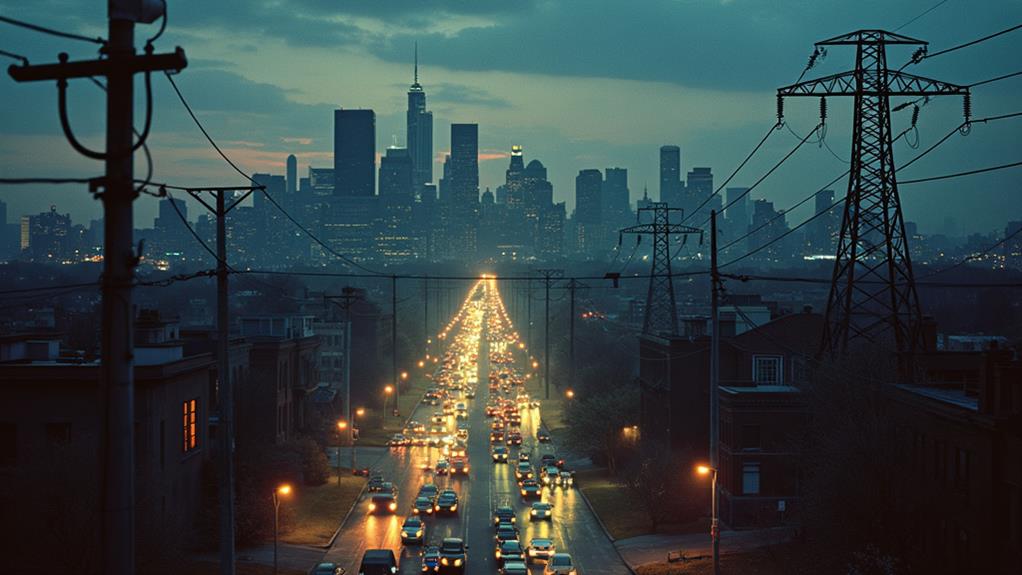
In response to the 1965 blackout, authorities swiftly implemented reforms based on the hard lessons learned. The creation of the Northeast Power Coordinating Council (NPCC) aimed to enhance communication and coordination among utility companies, thereby preventing future widespread outages through unified efforts.
A specialized task force quickly pinpointed deficiencies in voltage and current monitoring, advocating for advanced monitoring systems. These systems are now critical for early detection of issues that could lead to blackouts. Additionally, power plants faced new stringent operational guidelines to ensure equipment quality and adherence to operational standards.
Regulatory changes extended further with the formation of new organizations such as the Northeast Reliability Council and the New York Power Pool, which aimed to reinforce the electrical grid's reliability. These bodies established new standards to ensure a more robust and dependable power supply.
The blackout highlighted the necessity for redundancy in power systems. Consequently, significant investments were made to bolster grid resilience by adding layers of infrastructure capable of handling similar failures in the future. Collectively, these reforms aimed to create a more reliable and resilient power network, ensuring a secure and stable electricity supply.


